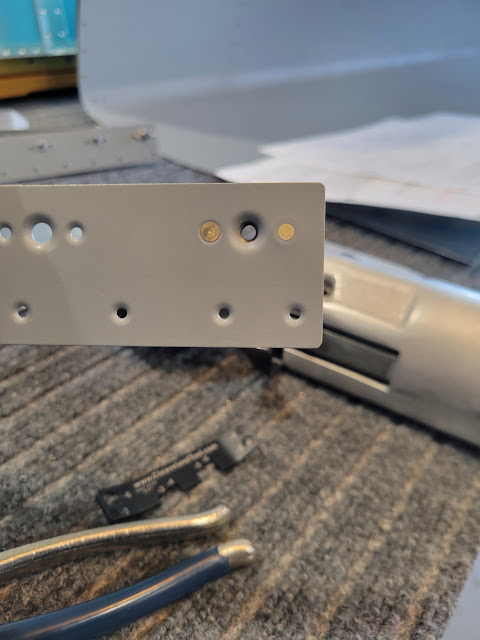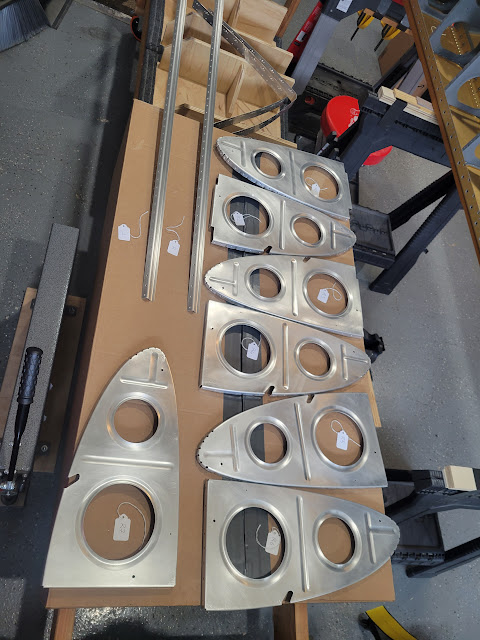Top Wing Skins (Right) 16-3-3, 16-4-4

Continuing on with top skin riveting on the right wing, my daughter and I completed most rivets on the outboard skin (except for those near the skin overlap), and started riveting the inboard skin from the center outward. Getting close to completing all rivets on the right outboard top skin. Very happy with the results so far. Starting to rivet the right inboard top skin to the ribs I put tape over the universal head rivets at the inboard end of the rear spar to avoid scuffing them while riveting the skin to the rear spar Outboard top skin fully riveted except for the skin overlap area With the outboard top skin riveted all the way to the outboard edge, I was now able to rivet in the outboard aileron bracket. I started by riveting the bracket to the rear spar first, but decided to delay riveting it to the outboard rib because I'll need to move the wing assembly a little to make additional room for the rivet gun. Outboard aileron bracket riveted to the rear wing spar Next, my daught


